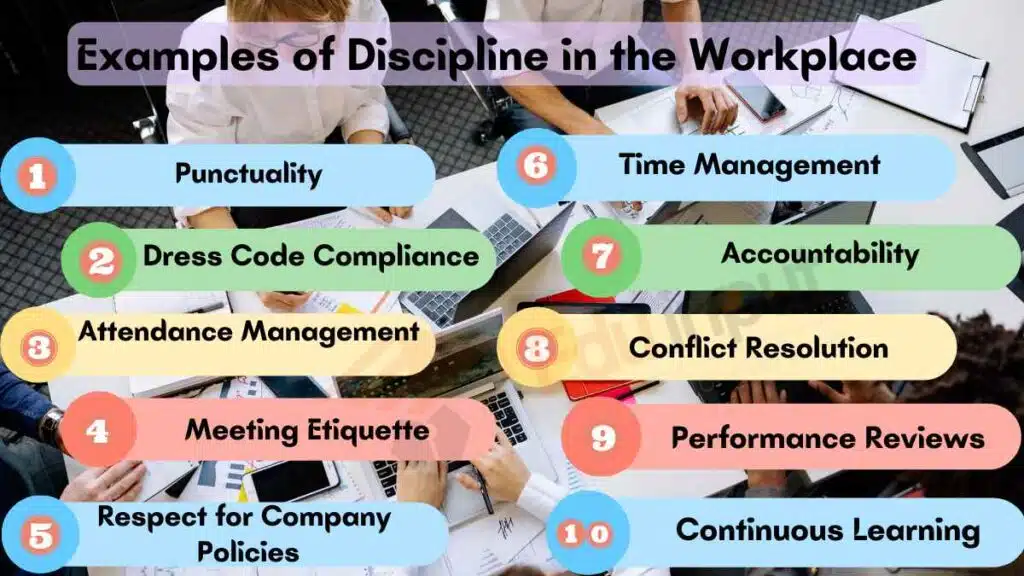10 Examples of Discipline in Workplace
Discipline in workplace is crucial for maintaining a productive and harmonious environment.
It ensures that employees adhere to company policies, meet their responsibilities, and work towards common goals.
In this blog post, we’ll explore ten examples of discipline in workplace that contribute to organizational success.

Examples of Discipline in Workplace
1: Punctuality
Being on time for work, meetings, and deadlines is a fundamental aspect of workplace discipline.
Employees who consistently arrive late can disrupt schedules, hinder productivity, and create a negative impression.
2: Dress Code Compliance
Adhering to the company’s dress code is a simple yet essential form of discipline. It promotes a professional appearance and helps create a unified and respectful workplace atmosphere.
3: Attendance Management
Maintaining consistent attendance is vital for team collaboration and project success.
Discipline in this area involves notifying supervisors in advance of any planned absences and following company procedures for requesting time off.
4: Meeting Etiquette
Disciplined conduct during meetings is crucial for effective communication. Employees should be attentive, avoid interrupting others, and come prepared to contribute constructively to discussions.
5: Respect for Company Policies
Employees should demonstrate discipline by following all company policies and procedures, including those related to data security, safety protocols, and ethical conduct.
6: Time Management
Effectively managing time is a discipline that helps individuals meet deadlines and optimize productivity.
Techniques such as setting priorities, minimizing distractions, and planning tasks can contribute to this discipline.
7: Accountability
Taking responsibility for one’s actions and outcomes is a hallmark of workplace discipline.
Employees should acknowledge their mistakes, learn from them, and work towards improvement.
8: Conflict Resolution
Discipline also extends to how employees handle conflicts. Encouraging open and respectful communication and using appropriate channels for conflict resolution help maintain a harmonious work environment.
9: Performance Reviews
Performance evaluations are an opportunity for both employees and supervisors to assess progress and set goals.
Discipline in this context involves taking these reviews seriously, setting measurable objectives, and working towards improvement.
10: Continuous Learning
Discipline is reflected in employees’ commitment to ongoing learning and skill development.
Staying up-to-date with industry trends, attending training sessions, and seeking professional development opportunities all contribute to personal and organizational growth.
Discipline in the workplace is essential for maintaining order, productivity, and a positive work environment.
Whether it’s being punctual, adhering to policies, or continuously improving one’s skills, these ten examples of discipline demonstrate how employees can contribute to the success of their organizations.
Encouraging and nurturing discipline at work can lead to higher employee satisfaction, improved performance, and long-term success for the company.



Leave a Reply